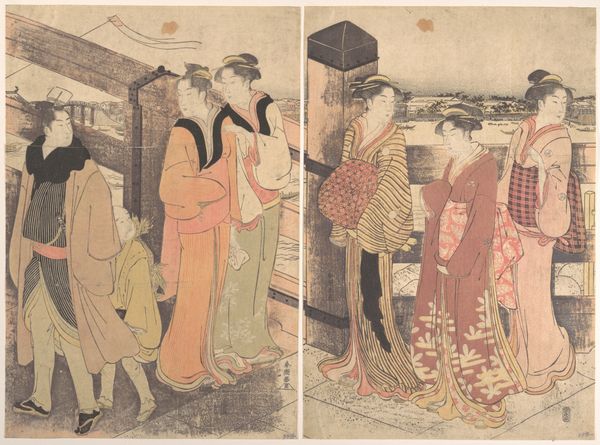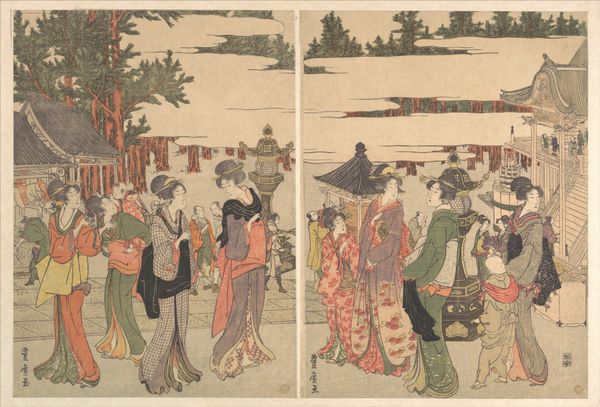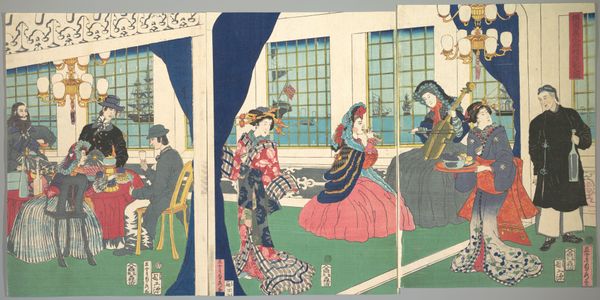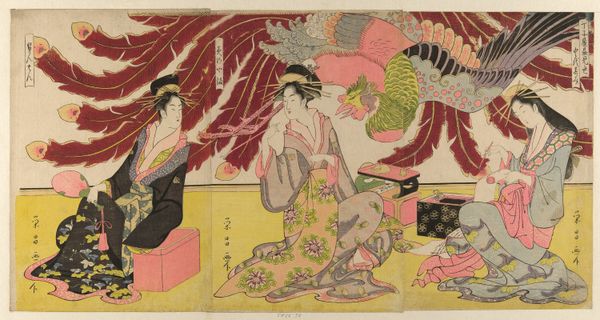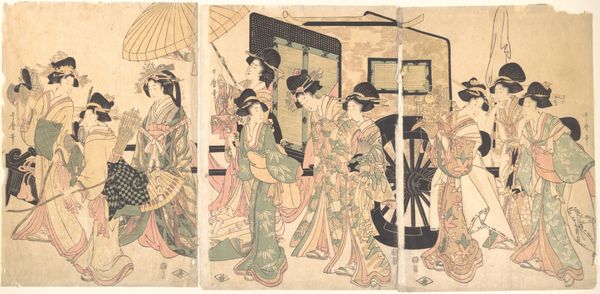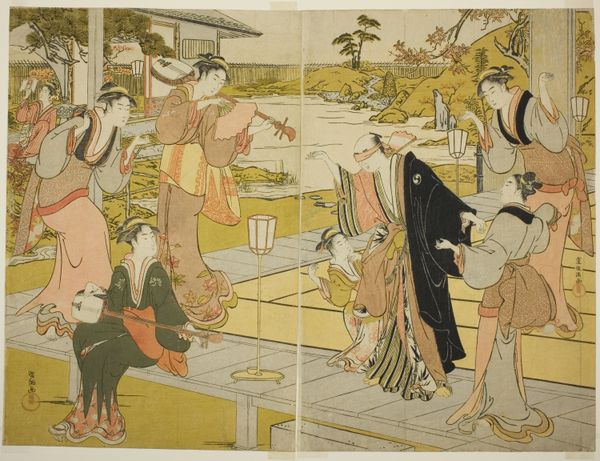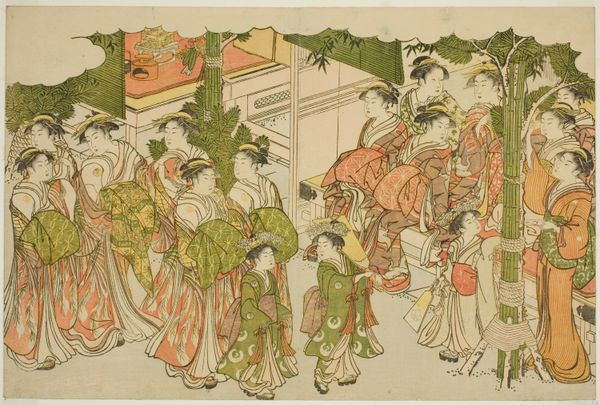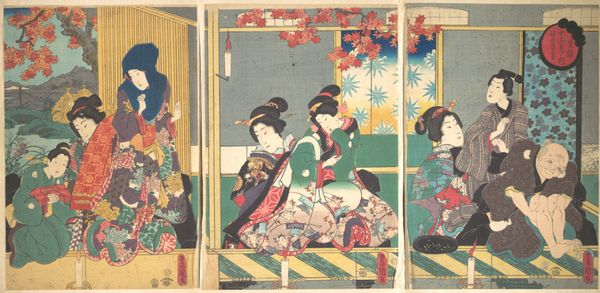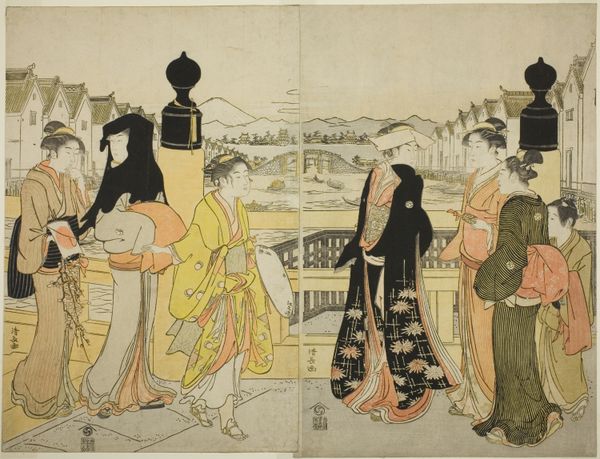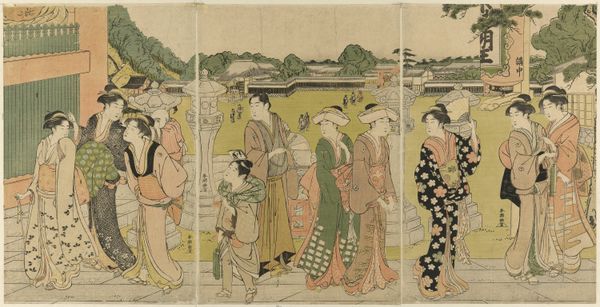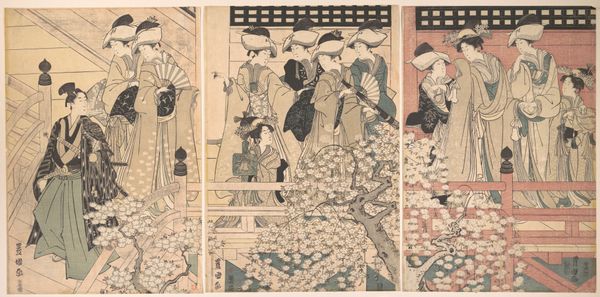
Pilgrimage to Myōhōji in Horinouchi, Edo 1794 - 1814
0:00
0:00
print, woodblock-print
#
portrait
#
tree
#
aged paper
#
toned paper
# print
#
asian-art
#
landscape
#
ukiyo-e
#
house
#
figuration
#
woodblock-print
#
cityscape
Dimensions: H. 14 3/8 in. (36.5 cm); W. 19 in. (48.3 cm)
Copyright: Public Domain
Curator: This is "Pilgrimage to Myōdōji in Horinouchi, Edo," a woodblock print made sometime between 1794 and 1814 by Utagawa Toyohiro. What strikes you about it initially? Editor: The composition! It’s split almost in two halves. On one side, there's a flurry of figures in a lively outdoor scene; on the other, a calmer, more enclosed interior space. It’s like two distinct worlds are coexisting on a single sheet. The subdued colors add a certain poignancy. Curator: The split offers a symbolic tension, wouldn't you agree? The outer scene overflows with representations of the temple's public face, its function within community life represented by those colorful robes, palanquins, and figures, a stark contrast to the inner scene’s private or spiritual devotion and retreat, the sacred feminine as it exists in both spaces. Editor: It also seems to echo a social stratification. Notice how the women are depicted, from the elaborately dressed figures on the left carrying the palanquin, seemingly confined to that task, to those inside engaged in what appears to be conversation and leisurely activity. Curator: Their elegant kimonos tell a story too; intricate patterns, rich colors reflecting not only taste, but also a connection to cultural memory. Each detail like that repeats. Their presence near Myōdōji speaks volumes about the feminine and sacred space in Shinto and Buddhist practice. The palanquin—a vehicle not just of transit but of significance in religious processions, carrying icons and sacred objects! Editor: Exactly! Pilgrimages were never purely religious experiences. They represented an intersection of the spiritual and the social—an opportunity for women, often restricted in their daily lives, to find community, maybe even express some agency in Edo society, as both a private citizen and devout participant in community and culture. What a powerful reflection of the past through contemporary experience! Curator: Agreed, by unpacking even small features we may rediscover hidden cultural truths. Editor: This piece helps to unearth a richer understanding of everyday social rituals and dynamics. Curator: For me, the symbolism leaves a mark, prompting contemplation.
Comments
No comments
Be the first to comment and join the conversation on the ultimate creative platform.
